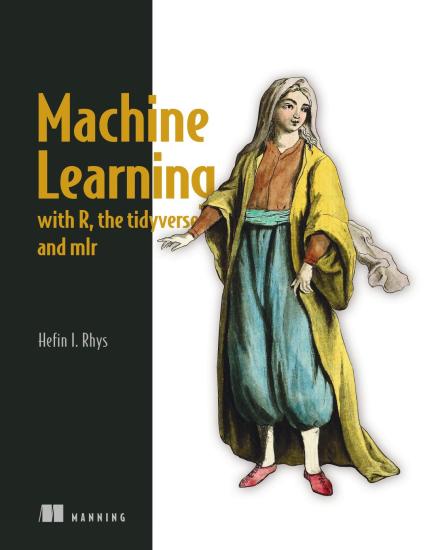
Rating: Not rated
Tags: Computers, Neural Networks, Databases, Data Mining, Intelligence (AI) & Semantics, Lang:en
Publisher: Simon and Schuster
Added: December 18, 2020
Modified: November 5, 2021
Summary
Summary Machine learning (ML) is a collection of
programming techniques for discovering relationships in data.
With ML algorithms, you can cluster and classify data for
tasks like making recommendations or fraud detection and make
predictions for sales trends, risk analysis, and other
forecasts. Once the domain of academic data scientists,
machine learning has become a mainstream business process,
and tools like the easy-to-learn R programming language put
high-quality data analysis in the hands of any programmer.
Machine Learning with R, the tidyverse, and mlr teaches you
widely used ML techniques and how to apply them to your own
datasets using the R programming language and its powerful
ecosystem of tools. This book will get you started! Purchase
of the print book includes a free eBook in PDF, Kindle, and
ePub formats from Manning Publications. About the book
Machine Learning with R, the tidyverse, and mlr gets you
started in machine learning using R Studio and the awesome
mlr machine learning package. This practical guide simplifies
theory and avoids needlessly complicated statistics or math.
All core ML techniques are clearly explained through graphics
and easy-to-grasp examples. In each engaging chapter,
you’ll put a new algorithm into action to solve a
quirky predictive analysis problem, including Titanic
survival odds, spam email filtering, and poisoned wine
investigation. What's inside Using the tidyverse packages to
process and plot your data Techniques for supervised and
unsupervised learning Classification, regression, dimension
reduction, and clustering algorithms Statistics primer to
fill gaps in your knowledge About the reader For newcomers to
machine learning with basic skills in R. About the author
Hefin I. Rhys is a senior laboratory research scientist at
the Francis Crick Institute. He runs his own YouTube channel
of screencast tutorials for R and RStudio. Table of contents:
PART 1 - INTRODUCTION 1.Introduction to machine learning 2.
Tidying, manipulating, and plotting data with the tidyverse
PART 2 - CLASSIFICATION 3. Classifying based on similarities
with k-nearest neighbors 4. Classifying based on odds with
logistic regression 5. Classifying by maximizing separation
with discriminant analysis 6. Classifying with naive Bayes
and support vector machines 7. Classifying with decision
trees 8. Improving decision trees with random forests and
boosting PART 3 - REGRESSION 9. Linear regression 10.
Nonlinear regression with generalized additive models 11.
Preventing overfitting with ridge regression, LASSO, and
elastic net 12. Regression with kNN, random forest, and
XGBoost PART 4 - DIMENSION REDUCTION 13. Maximizing variance
with principal component analysis 14. Maximizing similarity
with t-SNE and UMAP 15. Self-organizing maps and locally
linear embedding PART 5 - CLUSTERING 16. Clustering by
finding centers with k-means 17. Hierarchical clustering 18.
Clustering based on density: DBSCAN and OPTICS 19. Clustering
based on distributions with mixture modeling 20. Final notes
and further reading